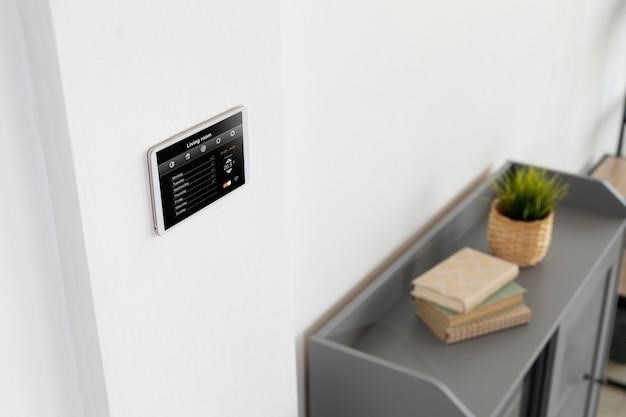Mitsubishi MHK1 Thermostat⁚ A Comprehensive Guide
This guide provides a complete overview of the Mitsubishi MHK1 wireless thermostat, including its features, programming, troubleshooting, and comparison with its successor, the MHK2. Find solutions to common problems and learn about compatibility with other Mitsubishi systems. Discover how to obtain the manual and ensure safe installation.
Obtaining the Manual

Securing your Mitsubishi MHK1 thermostat manual is straightforward, utilizing several readily available resources. Firstly, an online search, using keywords like “Mitsubishi MHK1 manual PDF,” often yields direct links to downloadable versions. Websites such as Manuals.co.uk frequently host user manuals for various appliances, including the MHK1. Mitsubishi’s official website, www.mitsubishipro.com, is another excellent source, potentially offering the manual as a downloadable file or a link to a digital version. Remember to verify the authenticity of any downloaded manual to ensure it’s the correct version for your specific MHK1 model. If digital access is unavailable, contacting Mitsubishi customer support is an alternative. They can provide assistance in obtaining a physical copy or guiding you through accessing the digital manual. Furthermore, exploring online forums dedicated to Mitsubishi HVAC systems can unearth user-submitted copies of the manual. Always double-check the source to ensure the integrity of the document.
Key Features and Specifications
The Mitsubishi MHK1 wireless remote control thermostat boasts a user-friendly backlit display for easy readability. A standout feature is its dual setpoint control, enabling independent temperature settings for heating and cooling modes. The system seamlessly switches between these settings based on the selected auto mode. Programming flexibility is provided through a 5-2 or 5-1-1 programmable schedule, offering four distinct temperature settings for each period. This allows for personalized climate control throughout the day and across different days of the week. The MHK1 ensures compatibility with Mitsubishi’s RedLINK technology, enhancing reliability and system integration. It’s designed for seamless installation and operation with the MCCH1 portable central controller, further expanding its functionality. The thermostat’s compact, wall-mounted design complements various interior styles. While specific dimensions and power requirements are best found in the official user manual, its wireless capabilities and ease of use make it a popular choice. Note that the MHK1 is now discontinued, with the MHK2 serving as its replacement.
Programming and Functionality
The Mitsubishi MHK1 thermostat offers versatile programming options to optimize comfort and energy efficiency. Users can choose between a 5-2 or 5-1-1 programmable schedule, allowing for four different temperature settings within each time period. This flexibility enables customized temperature control throughout the day and across weekdays and weekends. The dual-setpoint functionality is a key feature, enabling users to define separate heating and cooling temperature settings. The system intelligently switches between these settings when operating in auto mode. The intuitive interface simplifies navigation and programming, while the backlit display ensures easy readability in various lighting conditions. The MHK1’s functionality extends beyond basic temperature control, integrating with other Mitsubishi systems via RedLINK technology. While specific programming steps are detailed in the user manual, the overall design emphasizes user-friendliness and ease of operation. Remember that the manual provides a comprehensive guide to all programming features and options, ensuring a personalized and efficient climate control experience. However, note that this model has been discontinued and is succeeded by the MHK2.
Troubleshooting Common Issues
The Mitsubishi MHK1 thermostat, while generally reliable, may occasionally present issues. If the display shows an error code, consult the user manual for detailed explanations and troubleshooting steps. Common problems include the thermostat failing to communicate with the indoor unit, resulting in a lack of climate control. Check the battery level; low batteries can disrupt functionality. Ensure proper wiring connections between the thermostat and the system’s control board. If the unit is unresponsive, verify that the power supply is functioning correctly. Problems with temperature accuracy may indicate a faulty sensor or incorrect calibration. Refer to the manual for instructions on recalibrating the device. Sometimes, the programmed schedule might not be functioning as intended. Double-check the settings and ensure the correct time and days are programmed. If the issue persists despite these checks, consider contacting a qualified HVAC technician. They possess the expertise to diagnose and address complex problems that may require specialized tools or knowledge beyond the scope of the user manual’s troubleshooting section. Remember that the MHK1 is discontinued, so finding support may require contacting Mitsubishi directly or consulting online forums.
Comparing MHK1 with MHK2
The Mitsubishi MHK1 and MHK2 are both wireless thermostats designed for use with Mitsubishi mini-split systems, but they possess key differences. While the MHK1 offers dual-setpoint control and programmable scheduling (5-2 or 5-1-1), the MHK2 likely boasts improvements in user interface, features, and perhaps connectivity. The MHK1 uses a simpler, less intuitive interface, whereas the MHK2 may feature a more modern touch screen and potentially enhanced display clarity. The MHK2 might offer more advanced scheduling options, potentially including smart home integration and app control, absent in the MHK1. While both support RedLINK technology for communication with other Mitsubishi components, the MHK2’s RedLINK implementation could be more robust. The MHK1’s reliance on a traditional LCD display contrasts with the MHK2’s potentially more advanced screen technology. Energy efficiency may also differ, with the MHK2 potentially offering features to optimize energy consumption. Ultimately, the choice between them depends on individual needs and preferences. While the MHK1 is discontinued, the MHK2 represents the current generation and benefits from technological advancements. Considering these factors will aid in making an informed decision if upgrading or choosing a compatible thermostat.
Installation Guide and Wiring
Installing the Mitsubishi MHK1 thermostat involves several key steps. Begin by carefully reviewing the wiring diagram provided in the manual to understand the connections between the thermostat and the indoor unit’s control board. Ensure power to the system is turned off before commencing any wiring. Locate the CN105 connector on the indoor unit’s control board; this is the crucial connection point for the thermostat wiring. Securely attach the wiring harness to the CN105 connector, paying close attention to proper polarity and alignment. After completing the wiring, carefully mount the thermostat on a wall surface using the included mounting hardware. The location should be easily accessible and free from obstructions. Once the thermostat is mounted, restore power to the system. Verify all connections are secure and the thermostat is functioning correctly. The manual provides detailed instructions, including diagrams and illustrations, to assist with the installation. It’s crucial to carefully follow the steps to avoid incorrect wiring, which could lead to malfunctions or damage to the system; Remember that professional installation is always recommended if you lack experience with electrical wiring.
Compatibility with Other Mitsubishi Systems
The Mitsubishi MHK1 thermostat’s compatibility extends primarily to Mitsubishi mini-split systems. While specific model compatibility isn’t explicitly detailed in readily available online documentation, the MHK1’s functionality suggests broad compatibility with various Mitsubishi indoor and outdoor units. However, it’s essential to consult the official Mitsubishi documentation or contact their customer support to confirm compatibility with your specific system model numbers. The MHK1 often works with systems incorporating the RedLINK communication protocol, enhancing communication and control between the thermostat and the air conditioning unit. This protocol ensures reliable data transmission and efficient system operation. For older Mitsubishi systems that might not utilize RedLINK, compatibility may be limited or require additional adapters or modifications. Before purchasing or installing an MHK1, verifying its compatibility with your existing Mitsubishi equipment is paramount. Incorrect pairing could result in operational issues or even damage to the system. Always consult the detailed specifications and compatibility charts provided by Mitsubishi Electric to guarantee a seamless integration.
Safety Precautions and Warnings
Before installing or operating the Mitsubishi MHK1 thermostat, carefully review all safety precautions outlined in the official user manual. Never attempt installation or repairs unless you possess the necessary technical expertise and understanding of electrical systems. Always disconnect power to the system before performing any maintenance or modifications to prevent electrical shock. Ensure proper grounding to minimize the risk of electrical hazards. The MHK1, like any electronic device, should be kept away from excessive moisture or water to prevent damage and potential short circuits. Do not expose the thermostat to extreme temperatures or direct sunlight, as this can impact its functionality and longevity. If the thermostat malfunctions or displays unusual behavior, immediately turn off the power and contact a qualified technician for assistance. Never attempt to disassemble or modify the internal components of the thermostat; doing so can void the warranty and create safety risks. Proper ventilation around the thermostat is essential to prevent overheating. Pay close attention to all warning labels and instructions provided by Mitsubishi Electric. Ignoring safety precautions can lead to serious injury or property damage. Remember, your safety is paramount.

Discontinuation and Replacement Options
The Mitsubishi MHK1 wireless thermostat has been discontinued by the manufacturer. While you might still find some units available through third-party sellers, obtaining support or replacement parts may be challenging. Mitsubishi has officially replaced the MHK1 with the MHK2 model, which offers enhanced features and improved functionality. If you’re looking for a direct replacement for your discontinued MHK1, the MHK2 is the recommended alternative. However, before purchasing the MHK2, it’s crucial to verify its compatibility with your existing Mitsubishi mini-split system to ensure seamless integration. The MHK2 features a more modern design and often includes updated user interface elements and potentially improved energy efficiency. Contacting Mitsubishi Electric directly or a qualified HVAC technician is advisable for determining the best replacement option suited to your specific needs and system configuration. They can assist in assessing compatibility issues and guiding you toward a suitable substitute that maintains the performance and reliability you expect from your climate control system. Don’t hesitate to explore other compatible thermostats offered by Mitsubishi or other reputable manufacturers if the MHK2 doesn’t perfectly fit your requirements.
